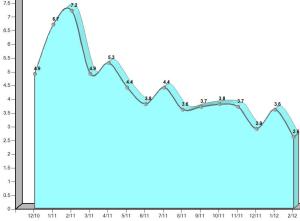I was having lunch with my wife yesterday and once again heard the common subject of the Real Estate market and the impact of foreclosures from a table seated directly next to us. The guys appeared to be young professionals and well educated. Yes, it’s not good to judge a book by it’s cover, but this restaurant wasn’t the kind where “just anybody” eats at.
The most vocal guy in their group yelled, “they’re artificially manipulating the market! My friend has been outbid while looking for a home 5 times now.” He further added later, “the banks know that if they release all these properties, they will take a huge loss.” His viewpoint is a very common one for someone observing the Real Estate market from a distance through newspapers, TV, the internet, and first-hand from a friend who’s actively looking for a home to buy.
So, let’s examine this: Are banks really “holding on” to foreclosures?
As an agent who deals 80% of the time with distressed properties on both sides of the transaction, I had to chuckle when eavesdropping on the table next to us. You see, if you thoroughly understand the distinction between “notes” and “servicing” you’ll know that it would take a highly organized stance by the top players in the servicing industry and biggest holders of the notes. The thought of a conference call with these main players saying, “Guys…we need to hold off on foreclosing because we need to control the Real Estate market’s supply” gets more entertaining every time I imagine it.

Let’s examine the key players here and their conflicting interests:
1. The Servicer or “the banks” – most people think that the company sending you your mortgage statement actually has their own money at stake. In most cases, there is an investor that owns “the note” and has a servicing agreement where they’re paid fees for collecting payments. Their interests are best served when they continue servicing the note — regardless if the borrower is making payments or not.
2. The Investor of the Note – the investor is the person who has their cash tied up. In return for their cash, they receive a “promissory note” and receive installments on it until the loan is paid off. Before you picture a guy in a suit holding a briefcase, you have to know that most notes are held by large institutions and held as “mortgage backed securities” or part of another investment portfolio where there are multiple investors. You can have a significant portion of your 401(k) or IRA in these and not be aware of it. Their interests lie in having the best returns on the cash. This is also why most loan modifications are denied: they don’t make business sense. When the borrower stops paying on their mortgage, it’s usually best to foreclose as quickly as possible and put the money into another investment.
3. Mortgage Insurance – many of these notes are insured to appear attractive to other investors when being sold. A mortgage insurance company protects the investor against losses and often have an impact on a servicer’s decision to modify, foreclosure, or allow a short sale. Just like any insurance company, they must maintain a fine balance between issuing new policies and minimizing costs paid toward coverage.
4. The borrower – their interests vary from homeowners wanting to stay in their home at a lower payment, the homeowner who simply wants to take advantage of the system, the homeowner who wants to “walk” and simply allow foreclosure, and the homeowner who wants to settle the debt through a short sale.
If the banks aren’t deliberately “holding on” to properties, what’s the explanation why they appear to not foreclose? There are several factors:
1. Mutual postponement of foreclosure – the bank can agree to postpone foreclosure filings while the homeowner applies for a loan modification or short sale. It’s very typical the bank will allow up to a year for a homeowner to skip payments without losing the home. While this may be the case today, the pressure is increasing from the investors who want their money quicker.
2. Class action suits or other high level decisions by servicer – loans belong to a “pool” of notes. Whether it’s tied to the robo-signing mess or other alleged fraud by the servicer, a court decision can postpone foreclosure for a borrower who didn’t even ask for it.
3. Increasing rights and incentive for homeowners to miss mortgage payments – anytime I listen to Obama speak, listen to the radio, browse the internet, or watch TV, there’s seems to be an underlying message to not be responsible for your debts. A homeowner who plays the victim whether they have true hardship or simply want to take advantage of the system has a number of options available to them to stall foreclosure. I’ve seen ads from law companies with the headline, “live in your home for years — mortgage free.”
Yes, my explanation is complicated. However, most will not face reality because it places blame back on to us as individuals. Unlike the movies, it doesn’t identify one “bad guy.”




